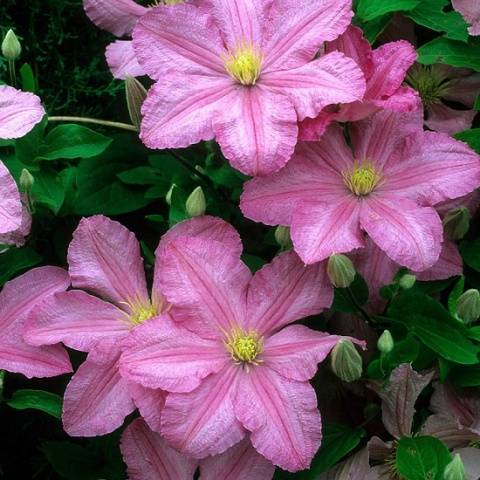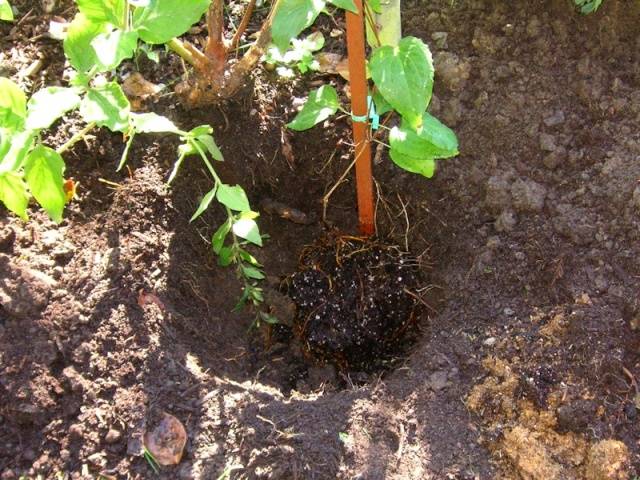Content
Any person who sees a flowering wall of clematis for the first time will not be able to remain indifferent to these flowers. Despite some fastidiousness in care, there are varieties of clematis, the cultivation of which will not bring any difficulties even to a beginner, and the abundance of flowers will blow the imagination of anyone. Clematis Comtesse De Boucho is one of these, a description of the variety with numerous photos and reviews from gardeners can be found in this article.
Description
Comtesse de Boucheau deservedly belongs to the masterpieces of the world collection of clematis and has more than a century of history, since it was bred by the French breeder Francis Morel at the end of the 9th century. At one time, this variety of clematis received an award from the Royal Horticultural Society for services to the garden. It was very popular a hundred years ago, and received its name in honor of the Countess de Bouchot, who had a beautiful garden in Chasselas, Rhône district in southeastern France.
The liana has great growth energy; it can reach a height of 3-4 meters. Although in most regions of Russia, clematis Comtesse De Busho shows more modest figures - about 2-3 meters.
The leaves are dense, complex in shape, and consist of five ovate-pointed leaflets. The buds, like the flowers, look up. Flowers are formed on long peduncles (up to 18 cm) and when opened are not gigantic in size (about 10-15 cm in diameter). But they are formed in huge quantities, and in terms of the duration and abundance of the flowering period, the clematis Comtesse De Boucho still has no equal, at least in its color group.
The flower is not double, consists of 6 elliptical sepals with a slight point and slightly wavy edges. The color of the petals is pink with a purple tint traditional for clematis. The petals are slightly corrugated, with veins of a more saturated purple hue standing out on them. The anthers are cream-colored, and the stamens are bright yellow. It can set single seeds, which still make no sense to use for propagation. Flowers do not have a tendency to fade.
Clematis Cometes De Boucho blooms in the traditional period from July to September. According to some gardeners, it can begin even in June and last almost throughout the entire summer period.
One of the unique advantages of the clematis variety Comtesse De Boucho is the fact that its flowering begins almost from the ground itself (at a height of 25-30 cm) and spreads along the entire length of the shoots up to 2.5-3 meters.Already in the second year of planting, under favorable conditions, you can observe this stunning spectacle. And every year the bush will only grow and increase in size, especially in width. After all, the lifespan of this clematis is about 20 years.
Landing
Planting any clematis, even one as unpretentious as Comtesse De Boucho, should be taken very seriously, since it lives for a long time and it is better to avoid mistakes from the very beginning than to correct them later.
Choosing a place and time for landing
In order for clematis Comtesse De Boucho to grow well and bloom profusely for planting, you must choose a place with the following parameters:
- An abundance of sun is desirable for flowering; in extreme cases, there may be slight partial shade for half the day.
- Protected from drafts and constant winds.
- With a low groundwater level, otherwise it is necessary to build an artificial embankment with a height of at least 15 cm.
- There should be at least 50 cm from the wall or fence, and water should not flow from the roof during rains.
Clematis seedlings can be planted in a permanent place both in late spring and early autumn. In the spring, it has more time to get comfortable in a new place and prepare for winter, but it is necessary to act very carefully when planting, so as not to damage the fragile young shoots. In autumn, planting clematis is easier, but it is necessary to plant the bushes no later than a month or two before the onset of stable frosts, so that they have time to take root.
If a clematis seedling is purchased with a closed root system, then it can be planted even in summer, but only under the condition of shading and regular watering within a month after planting.
Selection of seedlings
The following requirements apply to the appearance of bare-rooted clematis seedlings:
- No mechanical damage or traces of any diseases.
- The shoot, about 5 cm long, must have at least two unopened buds.
- The total length of the roots should be about 50 cm, and the number of roots should be at least five.
Soil requirements
Clematis variety Comtesse De Boucho prefers to grow in breathable, light, but well-fertilized soil. It will not like acidic soils at all; it will be necessary to add lime or at least wood ash. On heavy soils, it is necessary to add sand and humus or compost.
How to plant
A few weeks before planting clematis, it is best to first dig a hole measuring about 60 cm in length, width and depth. The planting mixture is prepared from equal parts of humus and garden soil with the addition of 3-4 kg of sand, 400 g of dolomite flour and 150 g of superphosphate. At the bottom of the hole, a small mound is formed from the planting mixture, the roots of the seedling are spread on it and carefully covered with the remaining soil mixture.
Supports must be installed before landing. After planting, clematis must be tied to supports for the first time. Later, he himself will be able to cling to them with the bases of the leaves.
Care
The most important procedures for caring for clematis Comtesse De Boucho are watering, fertilizing and pruning.
Watering
Clematis respect watering very much, since lack of moisture causes the flowers to become smaller and the flowering time is greatly reduced.On average, in hot weather it is necessary to water the bushes at least 2-3 times a week, preferably with foliage irrigation. But this should be done only after sunset.
Top dressing
If you added the correct amount of organic matter and mineral fertilizers when planting clematis, then in the first year after planting it is possible not to feed it at all. But from the second year, abundant flowering can be achieved only by alternating organic and mineral fertilizing 1-2 times a month throughout the warm season. Fertilizing (especially nitrogen) can only be stopped at the end of summer.
Mulching
Watering can be reduced somewhat if the root zone of clematis is thoroughly mulched with a thick layer of organic material. In addition, the roots of clematis, unlike the plants themselves, do not tolerate sun and heat, so shading with mulch will also have a positive effect on the viability of the plants as a whole.
Trimming
During the summer and autumn, it is necessary to remove dry, wilted or damaged shoots from clematis. But in the fall, clematis Comtesse De Boucho is cut off completely at a level of approximately 20-30 cm from the soil level, so that there are from two to four buds left on each shoot.
Shelter for the winter
The timing of pruning and covering clematis for the winter coincides with those usually determined for roses. After pruning, the entire root zone is completely covered with humus or peat, covered with a wooden or plastic container or box. The top is also covered with dry leaves or sawdust and the whole thing is covered with non-woven material, securing it well so that the wind does not blow it away.
In the spring, it is important to choose the right timing so that the shelter is removed in time so that the clematis Comtess De Boucho does not suffer from damping off, which is more dangerous for it than frost.It is best to do this gradually over several weeks, first removing all artificial coverings and then lightly freeing the bush from mulch.
Disease and pest control
Of the diseases, the most dangerous for clematis is wilt or wilt.
But it appears mainly when planting rules are not followed and in an inappropriate place. For prevention, it is recommended to sprinkle the clematis roots with a mixture of wood ash and sand, secure the plants well on supports and spray them with Fitosporin several times.
Reproduction
The seed method of propagating clematis can only be used for specific natural forms, since the rest do not retain the properties of the mother plant.
Vegetative propagation method includes:
- Dividing the bush – It is best to divide clematis bushes between 5 and 7 years old. In spring or autumn, simply dig up and separate part of the bush.
- Layerings – fully ripened shoots are placed in grooves to a depth of 8-10 cm and covered with earth, leaving 20-25 cm of the tip of the shoot on the surface. The next season, the new plant is separated.
- Cuttings – the easiest way is to get a large number of new plants. For 3-4 year old clematis bushes, before flowering, cut cuttings 6 cm long with two or three buds from the middle of the bush. After treating the cut with Kornevin, plant it in a mixture of sand and peat and constantly moisten it.
- Clematis grafting – used only by professionals.
Application in landscape design
Thanks to its beauty and unpretentiousness, Clematis Comtesse De Busho can be used in any vertical gardening: arches, gazebos, fences, walls of buildings, as well as decorating old trees.
Reviews
Gardeners have long appreciated the clematis variety Comtesse De Boucho and the reviews about it are always excellent.
Conclusion
In terms of abundance and duration of flowering, the Comtesse De Boucho variety seems to have no equal, at least among pink clematis.And at the same time, the variety is distinguished by its relative unpretentiousness to growing conditions and resistance to diseases.




















